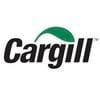Explore all the information on
Swine management
Pig production is the systematic rearing of pig breeds on scientifically based management principles for economic benefit. The main objectives of pig production are to provide consumers with pig meat and related products and to generate income for farmers.
Pig production plays a significant role in the livestock industry, providing an important source of protein and other valuable products. The systematic approach to pig rearing ensures that the pigs are healthy and well-cared for, which in turn leads to better quality products and higher yields. The focus on scientific principles and efficient management helps to reduce waste and increase profitability for farmers.
A swine producer who masters the art of good management has excellent profit opportunities. This is especially true with disease prevention and control. A healthy herd of good-growing, quality breeding animals — adequately fed and housed — provides maximum profit opportunities for the owner who does not over-spend for facilities and/or feed.
Introduction Water is the nutrient that is required in the largest quantity by swine. Compared to the other nutrients supplied by feed, it is the most frequently misunderstood and mismanaged nutrient. While various sources recommend that water be available free choice, most fail to offer specific recommendations as to number of drinking spaces, drinker type, delivery rates of drinkers, or to specify quality parameters. In...
Comments : 1
Recommendations: 0
Weaning is a critical period in a pig’s life; the pig must cope with separation from the sow, the transition from highly digestible milk to a less digestible and more complex solid feed, a new environment, movement and separation from littermates, and exposure to unfamiliar pigs. During the first week pigs have a reduced growth rate, which is related in part to low and variable water and feed intake. 1,2,5 Additionally, the newly weaned...
Comments : 1
Recommendations: 0
Dr. Ad Van Wesel, Global Species Technology Leader at Cargill, explained the benefits of group housing of sows and showed results obtained in Europe, during "IX Simposio Brasil Sul de Suinocultura", in Chapeco, Brazil....
Comments : 0
Recommendations: 0
Introduction Animal vocalisations can contain information such as signalling threats [1], choosing mates [2] or alerting infants for suckling [3]. In case of livestock animals, information contained in vocalisations or other animals sounds could serve as valuable information for the farmer. A very good example is the rich vocal repertoire of pigs [4–6]. For instance, high frequency calls of pigs have already been...
Comments : 0
Recommendations: 0
With the weather turning warmer and fields firming up, producers are turning their thoughts to field work with less attention often paid to the pigs in production facilities. In the past couple of weeks I’ve seen many dairy producers hauling manure prior to beginning any field work.
In this region of the US, the vast majority of swine manure is fall applied. This reduces the risk of compaction on wet fields and eases the labor crunch as planting time approaches. However, there...
Comments : 0
Recommendations: 0
“Heat Check Boars” By: Paul Walker Thompson Date: January 11, 2016 I have just read a great article by Colin Johnson of Iowa State University where I learned some interesting things about “Heat Check Boars”. Let me share with you a few great points about “Heat Check Boars”. He states that Boar Exposure should start three days before you expect the sows to come into heat, and that the “Heat Check Boars” should be exposed to sows twice a day...
Comments : 2
Recommendations: 0
“Prevention And/Or Dealing With Foaming Manure Pits”
By: Paul Walker Thompson Date: March 25, 2016
The incidence of Foaming Manure Pits and their potentially dangerous effects on Human Hog Producers and on Pigs is definitely of concern these days. (1,2,3,+4) Foaming Pits have also contributed to Flash Fires in Hog Barns that can burn a Hog Building down. Recent research has been conducted to try and find out why some pits start to foam.
Foaming Pits have shown to have...
Comments : 0
Recommendations: 0
If we want to maintain a prolific and productive herd, we must continue to prioritise the introduction of high genetic merit replacement gilts into our herd. Additionally we must manage and feed them correctly in order to maximise the prolificy of breeding herd and efficiency of feeding herd in the future.
The old adage “If it’s not broke, don’t fix it” is often bandied about in all...
Comments : 0
Recommendations: 0
Dr. Mike Brumm, owner of Brumm Swine Consultancy, Inc., gives a presentation about pigs in confinement and about climate control in pig barns at the XI National Congress of Swine Production, Salta Argentina. ...
Comments : 3
Recommendations: 0
Animal welfare concerns are having a significant impact on livestock production. A particular issue facing the swine industry is the transition from individual gestation stalls to group pens, which has become a hot topic . Engormix asked Professor Lee Johnston , extension swine specialist at the University of Minnesota, to throw some light on this situation.
...
Comments : 3
Recommendations: 0
We define competitive feeding systems as those in which an animal can obtain more feed by winning a fight. However, this does not necessarily mean that you will observe a lot of fighting in such a system. Often, the majority of fighting will occur within a couple of hours after mixing. Once a sow’s dominance status has been established by aggression (fighting), it is often maintained by very subtle agonistic behaviour. These behaviours include threats...
Comments : 0
Recommendations: 0
Murdoch University researchers are investigating whether the effluent from piggeries can be effectively treated with micro and macroalgae so that species of the organism can be safely fed back to pigs.
The Cooperative Research Centre for High Integrity Australian Pork (Pork CRC) has invested $300,000 with the Algae Research and Development Centre at Murdoch University to investigate the proposals, which would cut costs,...
Comments : 1
Recommendations: 0
Currently within the European Union the composting of dead pigs is not permitted. The cost of dead pig disposal however has risen to a level where it is now a significant cost for all pig producers (€200-300 per tonne). Therefore it may be the time to consider composting as an alternative strategy for disposing of pig carcasses. The use of composting as a carcass disposal method is widely used outside of the EU. Other EU member states...
Comments : 0
Recommendations: 0
In India, there is very little information about professional management of a pig farm. Within this macro deficiency, there is acute absence of information on feed and disease management. Seeing the growth rate of piglets worldwide and comparing them to my recently started farm operations, i feel that i am not doing just enough. I need some help in factoring feed management for weaners, growers and finishers. My piglets are all growing and glowing till they are...
Comments : 0
Recommendations: 0
I just got through taking a course on how Modern Swine Housing is fitted for controlling the Inside Environment. There were many formulas and concepts. It left me with the knowledge that you need the help of an Agricultural Engineer to set up the correct Ventilation, Heating and Cooling Systems. These Engineers can also help you modify existing buildings to obtain better environments for your existing hog barns. Agricultral Engineers in the U.S. will probably...
Comments : 0
Recommendations: 0
Introduction Locomotor problems appear as the second most common sow removal reason (2). Claw lesions are an important underlying cause of locomotor problems in pigs (1). In the European Union all pig herds, from 2013 onwards, should loose house the sows after the fourth week of pregnancy. However, the frequency of claw lesions and lameness among loose housed sows was reported higher than the respective...
Comments : 0
Recommendations: 0
Lee J. Johnston from the University of Minnesota, speaks about differences between traditional facilities and those which take into account animal welfare regulations. He also mentions good production practices such as the use of antibiotics responsibly, profer feed processing protocols, etc.....
Comments : 0
Recommendations: 0
Commercial production actually moved away from group housing to sow stalls to improve sow welfare and ensure that sows could be given individual treatment. For the past 30 years the Australian pig industry has investigated sow housing, with increasing emphasis on the welfare of sows in stalls. In 2010 the Australian pork industry, in a landmark decision for an agricultural industry, agreed to voluntarily phase out gestation...
Comments : 0
Recommendations: 0
Introduction The industry definition of "Gestation Stall Free" was that sows and gilts should be kept in loose housing systems from five days after service until one week before farrowing. Associated with this voluntary phase out of sow stalls by industry has been increased emphasis on stall free gestation housing systems by the major retailers. Consequently, the Australian pork industry's move away from the use of sow...
Comments : 0
Recommendations: 0
Castration of male livestock intended for meat production is a long standing management practice. In North American swine production, castration is essentially universal and only a select few male pigs are left intact as potential breeder boars. There are two primary reasons for feeding out barrows rather than boars in pork production. The first is behavioral. As the age and body size of sexual maturity is reached, boars tend to be more aggressive with pen mates and more difficult to handle...
Comments : 2
Recommendations: 0






.jpg&w=3840&q=75)












